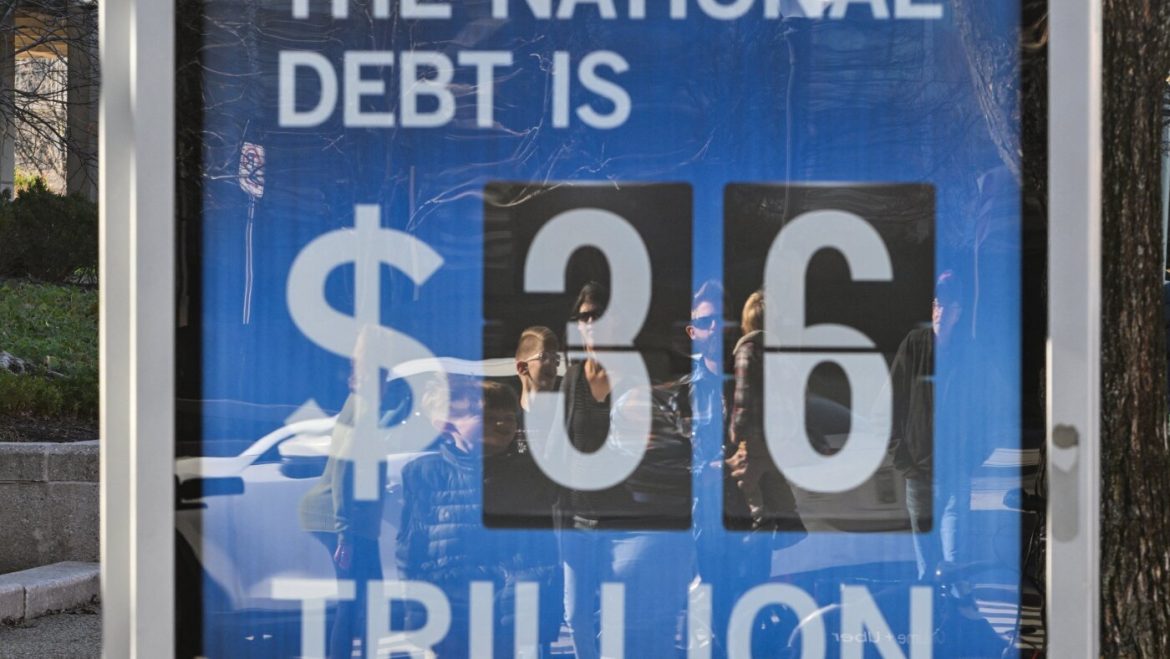The recent analyses by the nonpartisan Congressional Budget Office (CBO) and other economic observers provide a compelling yet complex perspective on the effects of President Donald Trump’s tariff policies. Across numerous reports and news articles, a consistent finding emerges: Trump’s tariff plan, if maintained at current elevated levels over the next decade, could reduce the federal budget deficit by approximately $2.8 trillion. However, this fiscal benefit comes intertwined with notable economic trade-offs, including a contraction of the U.S. economy, increased inflationary pressures, and diminished consumer purchasing power.
Understanding the Tariff-Induced Deficit Reduction
The cornerstone of the CBO’s forecast is that tariff revenues sharply increase federal income, thereby curbing the budget deficit. By imposing higher taxes specifically on imported goods—levied as tariffs—the government collects additional revenue that would otherwise not flow into the federal coffers. The cumulative effect over ten years is projected to be a substantial $2.8 trillion reduction in the deficit.
This scale of fiscal improvement is significant considering that the United States has grappled with growing deficits, which were around $1.8 trillion at the start of the Trump administration. A $2.8 trillion boost in revenues, over a decade, represents a dramatic shift in government receipts and suggests the tariffs could act as an unusual form of revenue enhancement akin to a tax increase on imports.
The Economic Compression: Shrinking Growth and Rising Inflation
Despite the apparent budgetary boon, the CBO and other analyses underscore the tariffs’ contractionary effects on overall economic growth. The estimates foresee a reduction in U.S. GDP growth by roughly 0.6 percent over the same time frame. This shrinkage results primarily from the higher costs levied on businesses and consumers who rely on imported goods and supply chains spanning global markets.
Higher tariffs translate directly into increased costs for U.S. companies importing materials and products from abroad. When these costs rise, companies may respond by reducing investment or raising their prices to maintain margins. For consumers, tariffs often mean higher retail prices on a broad array of goods, eroding purchasing power and constraining consumption—a major driver of economic growth.
In tandem with slowed growth, inflation is expected to edge upward due partially to these increased import costs. The tariff-driven inflation raises the broader cost of living, reducing how far American households’ incomes can stretch. This contraction in purchasing power may disproportionately affect middle- and lower-income families, for whom essential goods become more expensive.
Uncertainty and Caveats in Projections
Multiple reports emphasize the high degree of uncertainty surrounding these outcomes. The CBO’s estimates are contingent on tariffs being maintained at current levels for the entire ten-year period—a considerable assumption amid evolving political landscapes and international trade negotiations.
The economic environment, including reactions from trading partners, may shift, potentially altering import patterns, supply chains, or provoking retaliatory tariffs. Such responses could amplify or mitigate the effects projected and introduce volatility into the revenue and growth forecasts. Additionally, the balance among inflation, growth, and fiscal health remains delicate, and market sentiments could influence economic trajectories in unpredictable ways.
Broader Context: Tariffs’ Impact on Trade and Industry
Beyond macroeconomic effects, sector-specific impacts merit attention. The tariffs imposed under Section 232 and Section 301 have had diverse consequences for U.S. industries, notably manufacturers reliant on global supply chains who face increased input costs. Exporters’ behaviors are also affected, as uncertainty around tariff regimes influences their strategic decisions regarding production and international markets.
The prospect of tariffs curbing deficits while dampening growth creates a strategic trade-off. Policymakers must weigh the immediate fiscal advantages against potential longer-term costs in competitiveness, consumer welfare, and inflation control.
Conclusion: Navigating the Paradox of Deficit Reduction Amid Economic Headwinds
President Trump’s tariff strategy presents a paradox: a sizable estimated reduction in the federal deficit paired with an economic slowdown and inflationary pressures. The projected $2.8 trillion deficit cut underscores tariffs’ potency as a revenue tool, yet the accompanying shrinkage in growth and decreased purchasing power illustrate the broader costs borne by the economy and everyday Americans.
Decision-makers face challenging choices—whether to prioritize short-term fiscal consolidation at the risk of constraining growth or to seek alternative methods that better balance competitiveness, consumer affordability, and budgetary goals. As uncertainty continues around the persistence of these tariffs and their global ramifications, a nuanced and vigilant approach will be essential to harness potential fiscal gains without undermining broader economic health.


